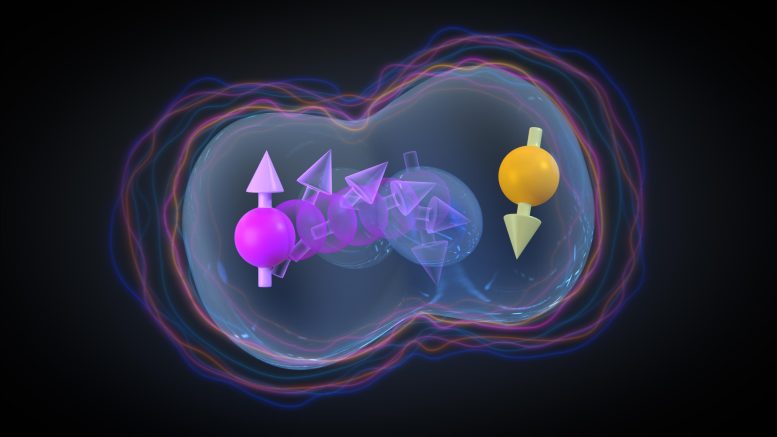Researchers are advancing quantum computing by developing qubits based on the spin of electrons and holes. Recent progress at the University of Basel has demonstrated controlled interactions between qubits using hole spin. This advance points to a promising future for scalable and efficient quantum computers using existing silicon technology.
Advances in qubit technology at the University of Basel promise scalability quantum computingusing spins of electrons and holes to achieve precise control and interaction of qubits.
The quest for a practical quantum computer is in full swing, with researchers around the world exploring a wide range of qubit technologies. Despite considerable efforts, there is still no consensus on the type of qubit that best maximizes the potential of quantum information science.
Qubits are the basis of a quantum computer. They are responsible for the processing, transmission and storage of data. Efficient qubits must reliably store and rapidly process information. This requires stable and fast interactions between a large number of qubits that can be precisely controlled by external systems.
Today’s most advanced quantum computers have only a few hundred qubits. This limits them to performing calculations that conventional computers are already capable of and can often perform more efficiently. For quantum computing to advance, researchers must find a way to accommodate millions of qubits on a single chip.
Electrons and holes
To solve the problem of arranging and connecting thousands of qubits, researchers from the University of Basel and NCCR SPIN rely on a type of qubit that uses the spin (intrinsic angular momentum) of an electron or hole. A hole is essentially an electron missing from a semiconductor. Holes and electrons have spin, which can take one of two states: high or low, analogous to 0 and 1 in classical bits. Compared to electronic spin, hole spin has the advantage that it can be fully electrically controlled without the need for additional components such as on-chip micromagnets.

Two aperture rotation qubits interacting. As the hole (magenta/yellow) moves from one place to another, its spin (arrow) rotates due to so-called spin-orbit coupling, leading to anisotropic interactions represented by the surrounding bubbles. Credit: PRN SPIN
In 2022, Basel physicists showed that hole rotations in an existing electronic device can be captured and used as qubits. These “FinFETs” (fine field effect transistors) are integrated into modern smartphones and are produced in widely used industrial processes. Now a team led by Dr. Andreas Kuhlmann has succeeded for the first time in achieving a controlled interaction between two qubits within this configuration.
Fast and precisely controlled turning
A quantum computer needs “quantum gates” to perform calculations. They represent operations that manipulate qubits and connect them to each other. As the researchers report in the journal Natural physics, were able to connect two qubits and cause a controlled spin of one of their spins, depending on the spin state of the other – known as controlled spin. “Hole rotations allow us to create two-qubit gates that are both fast and high-fidelity. This principle now also makes it possible to connect more pairs of qubits,” explains Kuhlmann.
The coupling of two spin qubits is based on their exchange interaction, which occurs between two indistinguishable particles that electrostatically interact with each other. Surprisingly, the hole exchange energy is not only electrically controlled, but also strongly anisotropic. This is a consequence of spin-orbit coupling, which means that the spin state of the hole is influenced by its motion in space.
To describe this observation in a model, experimental and theoretical physicists from the University of Basel and NCCR SPIN joined forces. “Anisotropy enables two-qubit gates without the usual trade-off between speed and fidelity,” says Kuhlmann. “Aperture-based qubits not only take advantage of proven silicon chip fabrication, but are also highly scalable and have proven to be fast and robust in experiments. » The study highlights that this approach has a great chance in the race to develop a large-scale quantum computer.
